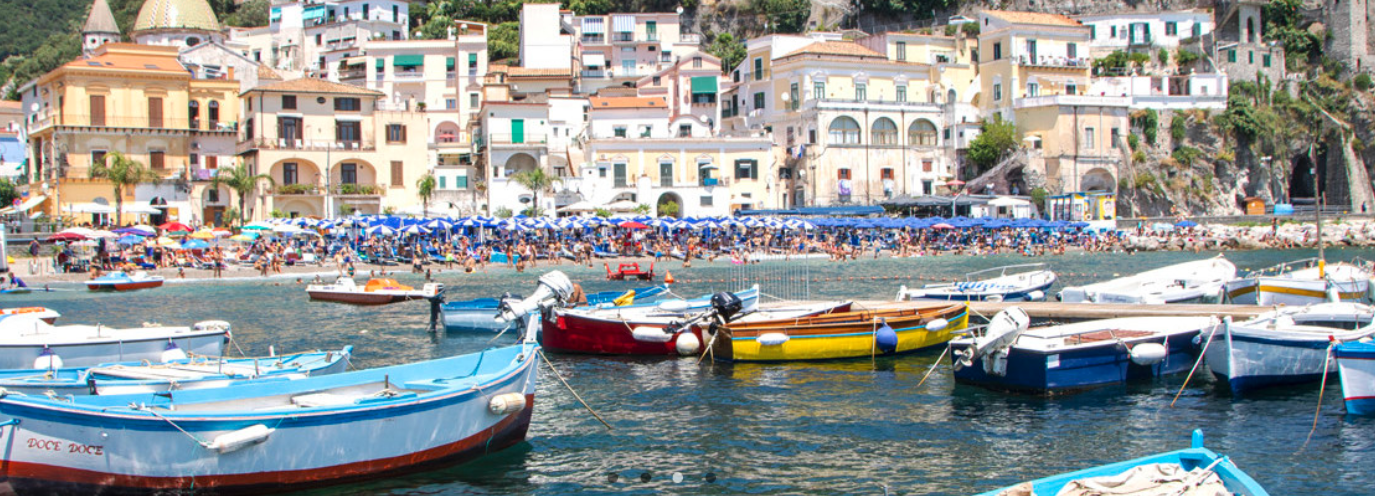Cetara

Those who arrive in Cetara have the impression of taking a dip in the past, because the charm that you sense in this seaside village at the foot of Mount Falerio, protected as a UNESCO World Heritage Site, is truly priceless.
The bond that unites its 2000 inhabitants to the sea is already perceptible in the name of this town, which presumably derives from "Cetaria", tonnara in Latin or from "cetari" fishermen or big fish traders.
In fact, fish for centuries, has represented not only the main food of the Cetara locals but also a source of livelihood for fishing families and still today the Cetara fleet is one of the most active in the Mediterranean, specializing in tuna and anchovy fishing and preparation and storage. The anchovy of the Cetara gastronomy is obtained from anchovies "Colatura di alici", the traditional recipe dating back to the ancient Romans, Garum, recovered in Middle Ages from some monastic groups of the Amalfi Coast ,that in August, used to preserve the anchovies in salt in wooden barrels, called ”mbuosti”, which, once under salt, they would lose brine liquids which leaked between the cracks of the barrels and was collected, then saved.
Hence the delicious Cetara recipe that is still marketed today and is used in famous recipes such as Cetara Pesto and Spaghetti alla Colatura di anchovies.
The Vice royal Tower
The Vice royal Tower rises majestically on the east side of the beach of Cetara and was built in the 16th century by the Angevins to defend the population from pirate attacks. It currently hosts a Civic Museum with the permanent exhibitions of numerous coastal painters, the so-called "costaioli".
The Church of San Francesco
The 17th century Church of San Francesco, whose dome of the only existing nave was frescoed by the painter Marco Benincasa preserves a representation of Sister Orsola Benincasa, founder of the Order of the Theatine Sisters of the Immaculate Conception, of Cetarian origin.
The Church of San Pietro Apostolo
The Church of San Pietro Apostolo was built in the 9th century to celebrate the expulsion of the Saracens and restored in the 18th century. Very beautiful its majolica dome, the thirteenth-century bell tower and the bell-shaped octagonal cell. Here is an ancient organ and a bilingual plaque (in Latin and Arabic) which commemorates Grandenetto d'Ausilio, the Cetarese protagonist of the liberation of Prince Federico of Aragon, taken prisoner by the barons of Salerno in 1484.
The Church of Santa Maria di Constantinople
Dating from the 19th century, it houses a beautiful statue depicting the gratitude Madonna carried in procession through the streets of the town every year in early June.
Cetara, a seaside village
During the summer, the patronal feast of St. Peter takes place in the seaside village with traditional fireworks on the sea on June 29th.
Every year, at the end of July, there is also a famous cultural-gastronomic event "La Notte delle lampare”, a festival dedicated to the fish symbol of Cetara. A fishing boat, with the big lamp-boats following, engages in a fishing trip, also open to tourists. While on the beach of Cetara there are tasting of anchovy dishes served in various ways and other typical local recipes, and the Vice royal Tower is lit up for the holidays and actors simulate the defence from a Saracen attack.
Ferry service by Travelmar. For information tel. 089.872950
Parking in Cetara
There is a large parking area near the port in Cetara that costs EUR 3/hour. When the parking lot fills up, they close the road into town and you can park at the Pastena parking lot in the upper part of town.
